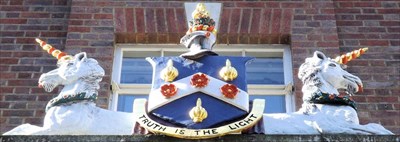Today, author Karen Harper discusses her latest novel, MISTRESS OF MOURNING (New American Library).
Q: Welcome, Karen. Can you tell us a bit about your new novel?
Q: Welcome, Karen. Can you tell us a bit about your new novel?
Q: So MISTRESS OF MOURNING is murder mystery (three murders of young princes) within a historical novel. Why did you decide to write a mystery instead of a “straight” historical as you have with your earlier books like MISTRESS SHAKESPEARE and THE QUEEN’S GOVERNESS?
A: The era and the plot just ran smack into these murders, all of which are yet debated today? Who murdered the Princes in the Tower is still argued today. Many blame King Richard III, but there is another possible royal villain too. (Yes, that’s a teaser.) Later, in the Reign of King Charles II, in July of 1674, during some rebuilding in the White Tower
As for Arthur Tudor’s demise, that is yet being investigated. Ground-probing radar has been used to pinpoint his final resting place beneath the limestone floor of Worcester Cathedral. Professor John Hunter of Birmingham University
Q: So tell us more about the amateur sleuth for the novel, Varina Westcott.
A: I found it fascinating that chandlers (candle makers) also produced waxen death shrouds as well as funeral candles in the Medieval and Tudor eras. Best of all for this story, because their shops made these waxen wraps for noble and royal corpses, chandler often worked as undertakers. So it made sense that Varina could be sent to Ludlow Castle in Wales
Coat of arms, Wax Chandlers Guild
Another fascinating thing about Varina is that she has inherited her father’s talent of being able to carve death masks. Royalty and some elite of that day wanted effigies atop their coffins for the funeral processions, and the effigies had carved faces of how they looked in life. Funeral candles were also a huge business. Even the poor saved for years to buy votive candles for their funerals—the more candles, the quicker they believed they got out of purgatory.
Q: Does this novel include a love story as did your earlier Renaissance era books?
A: Actually, there are two romances in MISTRESS OF MOURNING. The marriage between Henry VII and Elizabeth of York has been much debated since he was a rather austere character, yet they seemed to have a strong, loving marriage. I give the reader a glimpse into that and show how it effected their children, especially Henry VIII who is only ten when the novel begins. Varina falls in love with Nicholas Sutton, an ambitious courtier who is assigned to guard her, then helps her solve the murders. In a way all good writing is suspense writing (What will happen next?), but writing a murder mystery really allowed me to increase the tension and danger.
Q: Any interesting trivia you picked up in your research this time—things you didn’t know?
A: One thing is that the title The War of the Roses did not come into existence until 1762. It was a term coined in David Hume’s book History of England, so I reluctantly avoided using it in the novel. The upheaval that put the Tudors on the throne was really a civil war.
Also, this is hardly trivia, but I had no idea that the status of few women who owned their own shops was so low at this time. Varina only runs her chandlery because her husband died and left it to her. Unless a father, brother or husband deeded a shop to a woman, she could not own it. If she remarried, control of her business, finances and any minor children came under the new husband’s aegis. Also, women like Varina were not admitted to the powerful merchant guilds of the city—hers would have been The Worshipful Company of Wax Chandlers. Her shop could only be included through her brother-in-law, who worked for her, becoming a guild member. (The one exception to this no-women-in-the-guilds rule was the broiders—embroiders—guild.)
Q: So does Catherine of Aragon play a part in this book?
A: She does indeed, and it is so interesting to see her as a pretty, appealing young woman instead of the sad figure we usually see in the Anne Boleyn-era novels. I was interested to learn from the research that whether or not the weak, sometimes sickly Prince Arthur bedded her or not was a hot debate even at that time. Of course, during Henry VIII’s later attempt to divorce her, that question was of key concern.
Q: Part of this story takes place in Wales
A: It was still a place of legends, tribal chiefs and superstitions—and I took advantage of all that. The area around Ludlow Castle London
Q: I see the book has two different titles. How did that come about?
A: The book is titled MISTRESS OF MOURNING by my US publisher Penguin USA and THE QUEEN’S CONFIDANTE by my British publisher Random House UK UK London England
Learn more about Karen Harper's novels at her website.
Learn more about Karen Harper's novels at her website.















No comments:
Post a Comment